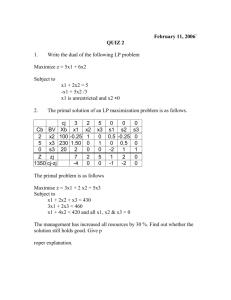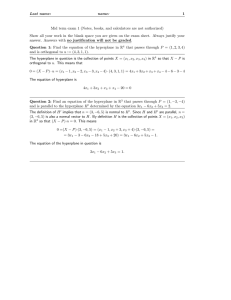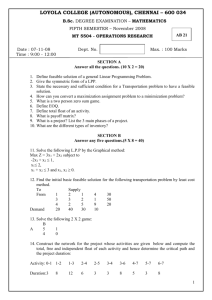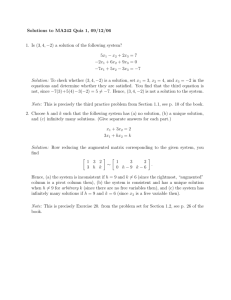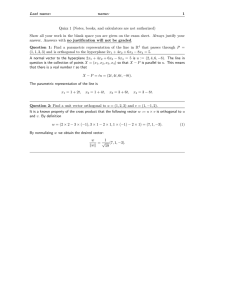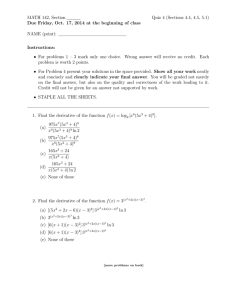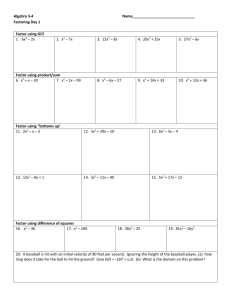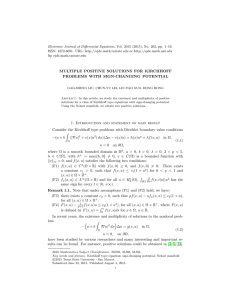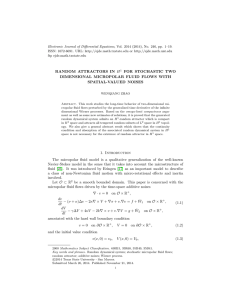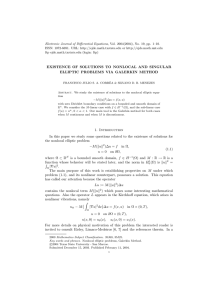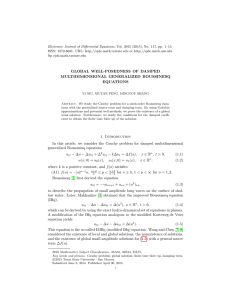Last name: name: 1 Quizz 1 (Notes, books, and calculators are not authorized)
advertisement
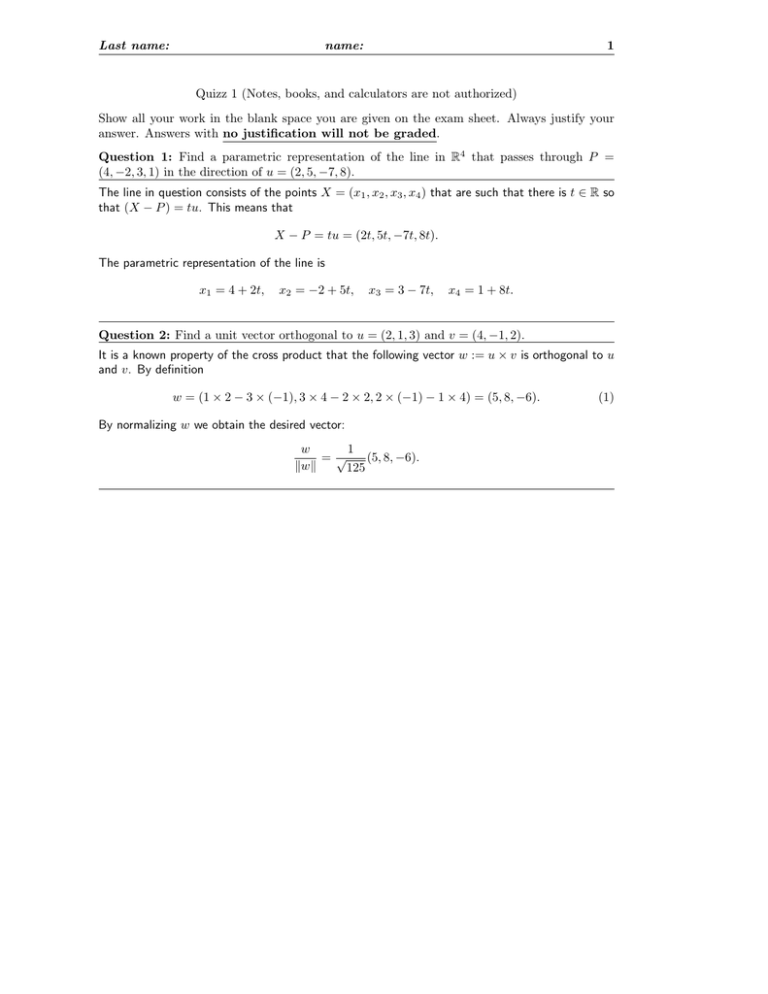
Last name: name: 1 Quizz 1 (Notes, books, and calculators are not authorized) Show all your work in the blank space you are given on the exam sheet. Always justify your answer. Answers with no justification will not be graded. Question 1: Find a parametric representation of the line in R4 that passes through P = (4, −2, 3, 1) in the direction of u = (2, 5, −7, 8). The line in question consists of the points X = (x1 , x2 , x3 , x4 ) that are such that there is t ∈ R so that (X − P ) = tu. This means that X − P = tu = (2t, 5t, −7t, 8t). The parametric representation of the line is x1 = 4 + 2t, x2 = −2 + 5t, x3 = 3 − 7t, x4 = 1 + 8t. Question 2: Find a unit vector orthogonal to u = (2, 1, 3) and v = (4, −1, 2). It is a known property of the cross product that the following vector w := u × v is orthogonal to u and v. By definition w = (1 × 2 − 3 × (−1), 3 × 4 − 2 × 2, 2 × (−1) − 1 × 4) = (5, 8, −6). By normalizing w we obtain the desired vector: 1 w =√ (5, 8, −6). kwk 125 (1) 2 Quizz 1, September 6, 2011 Question 3: Find an equation of the hyperplane in R3 that passes through P = (1, −3, −4) and is parallel to the hyperplane H 0 determined by the equation 3x1 − 6x2 + 5x3 = 2. The definition of H 0 implies that n = (3, −6, 5) is normal to H 0 . Since H and H 0 are parallel, n = (3, −6, 5) is also a normal vector to H. By definition H is the collection of points X = (x1 , x2 , x3 ) so that (X − P )·n = 0. This means 0 =(X − P )·(3, −6, 5) = (x1 − 1, x2 + 3, x3 + 4)·(3, −6, 5) = = 3x1 − 3 − 6x2 − 18 + 5x3 + 20) = 3x1 − 6x2 + 5x3 − 1. The equation of the hyperplane in question is 3x1 − 6x2 + 5x3 = 1. Question 4: Prove the Schwarz inequality: |u·v| ≤ kukkvk for all vectors u and v in Rn . Let u and v be two vectors in Rn . The following holds for every t ∈ R, 0 ≤ ku + tvk2 := (u + tv)·(u + tv) = u·u + tu·v + tv·u + t2 v·v = kuk2 + 2t(u·v) + t2 kvk2 . This means that the quadratic polynomial kuk2 + 2t(u·v) + t2 kvk2 in t cannot have two disctinct real roots. This implies that the discriminant 4(u·v) − 4kvk2 kuk2 is negative, or equivalently 4(u·v) ≤ 4kvk2 kuk2 . Dividing by 4 and taking the square root gives the Schwarz inequality |(u·v)| ≤ kvkkuk.
